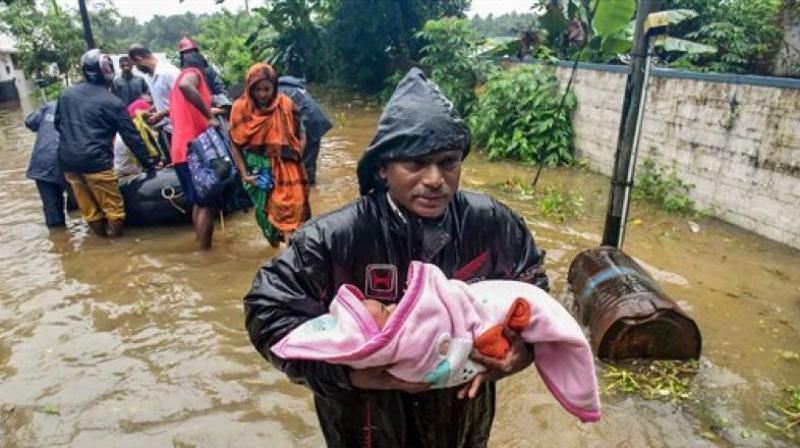The Kerala floods of 2018 had been one of the most devastating floods in the history of the state as well as the entire country. It was after a hundred years that the state had witnessed such calamity at that heavy level. Several arguments have come up against the floods in Kerala, with some arguing that the catastrophe was due to nature’s fury and others arguing that this tragedy was a result of the destruction caused by mankind to the environment and our unpreparedness of facing natural disasters. However, it had been a heavy crisis with a huge monetary and human loss in the history of the state. Let us see the causes of Kerala floods and the magnitude of the floods along with recovery and solutions to tackle such situations.
Table of Contents
Magnitude of floods
There has been huge damage caused to roads, houses, and infrastructure. There had been landslides, and millions of people were evacuated. There were many who went missing, and all the districts in Kerala were put on red alert. The monsoon months of Kerala last year had more rainfall than ever, the river flowing in full capacity along with drainage congestion and erosion of river banks. The Indian meteorological department mentions that Kerala received 42% more rainfall than normal from the month of June to August of 2018. It received 2346.6 mm instead of expected 1649.5mm.
So what exactly are causes of Kerala floods?
There had been several inhibitions on reasons and causes which may have caused floods in Kerala. Let us see the most debated talks on reasons for Kerala floods.
- There had been unregulated management of Dams and constructions in last decade in the state.
- Heavy rainfall on the other side with long duration and frequency have caused flooding too.
- The heavy rainfall with early monsoon filled dams with excess water. This scenario was not expected, and there was part of unpreparedness from officials.
- Deforestation has also been a major concern. The hill areas have been reducing due to deforestation and rising of water has been noted due to the cutting of trees. This reduced water storing capacity of ground too.
- Checking water flow during continuous frequency of monsoons did not happen which aggravated the issue of floods.
- Mining and Quarrying had also reduced and loosened soils to a large extent.
- Several development projects like airports and bungalows have made way in the path of paddy fields. These fields were like a water reservoir, and these were replaced with new infrastructural projects.
Impact of Kerala floods
While there we saw the significant causes of Kerala floods, the impact was substantial. The heavy floods have caused massive damage to human lives and property along with infrastructure. The lifeline projects of the state have been damaged. Massive fatalities have caused due to dense population. A lot of rebuilding and development works had to be taken up after the situation of the flood have crossed. The quality of life, normal life and development had to be restored.
Not just human lives, but animals were also profoundly affected as they destroyed the habitat. This got man and animal encounter during Kerala floods. Further, agricultural lands were destroyed, and crops have been in loss due to submerging in water. Economic loss was heavy. There was poor access to food and clean water in the state, especially the case with northern Kerala districts. Food prices have heavily shot up, and the poor could not even afford a meal per day.
What should be the way now?
Floods management and warning system should have been more strengthened. Agencies should work with a friendly way to see the consequences and results. Development of infrastructure and projects should be rather limited instead. Unplanned construction should not be ignored and avoided. Deforestation should be stopped and rather trees should be planted and encouraged. Cutting of trees should be stopped at any cost in order to prevent climate change and the ill effects of deforestation. Planning for mitigation and warning systems should be robust. Early warning system should be strengthened too and should be given paramount importance. Plans to mitigate should be made, and disaster risk reduction should be taken up as a goal.
Sustainable development is now the need of the hour. The development and growth in the name of projects should not disturb nature and natural resources. Ecosystem balance should be well maintained.
Recovery from Kerala floods
So now that we have seen the extent of damage that took place, what is a way to recovery and how is Kerala coping up? The effect of the flood can be observed after water level recedes and this is the biggest challenge now. Rebuilding life back in normal state is no easy task. The Government has put emphasis on Rebuilding homes, hopes, and infrastructure heavily. Recovery and rehabilitation is what is required at the moment.
While emergency aid, army help and man help were tremendous during floods, it was a positive sign for us to look forward to how fellow humans helped each other. Evacuations took place from flood-hit zones on time. Relief camps were majorly laid and temporary shelter was provided. The state had got relief from Government of India and overseas along with several organizations, corporates and fellow states in India to help with tackling the situation. Human and material damage assessment has begun immediately. The government immediately focused on restoring electricity and getting basic food and shelter. The efforts were laid on providing quality of life. Refurbishing homes had begun immediately. Road construction had begun side by side. State government has also begun with plan to construct storage dam as part of long term plan through tributaries of rivers.
While normal life was restored due to monetary and human support from other states, organizations, and corporates, greater effort was put by the government to tackle the situation with efforts. However, it is important to realize that long term robust solutions should be made in order to reduce human loss and monetary loss during this kind of calamities.

